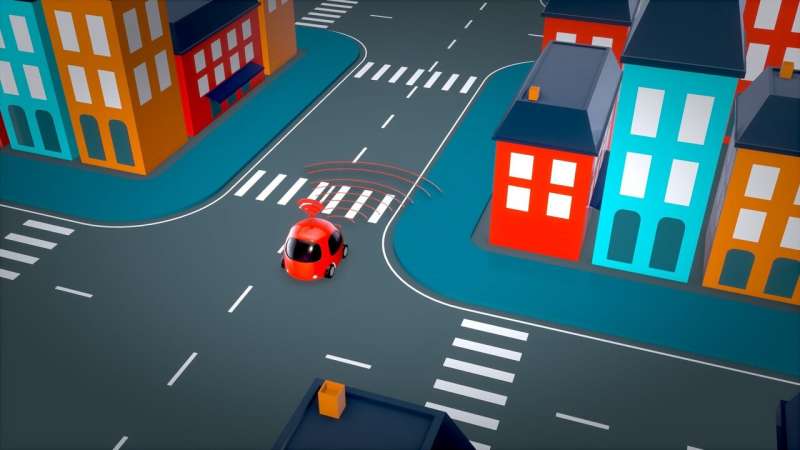This article has been reviewed according to Science X's editorial process and policies. Editors have highlighted the following attributes while ensuring the content's credibility:
fact-checked
trusted source
proofread
Self-driving cars can make traffic slower: Study

A new study finds that "connected" vehicles, which share data with each other wirelessly, significantly improve travel time through intersections—but automated vehicles can actually slow down travel time through intersections if they are not connected to each other. The culprit? Safety.
"There are two significant reasons that people are interested in automated vehicles—improving passenger safety and reducing travel time," says Ali Hajbabaie, first author of a paper on the work and an associate professor of civil, construction and environmental engineering at North Carolina State University.
"There is a lot of research showing that automated vehicles can improve safety. But our research here—which relies on computational modeling—suggests that if we want to also improve travel time, an increase in automated vehicles isn't enough; we need vehicles that are capable of communicating with each other and with the traffic-control systems that manage traffic flow at intersections."
For the study, the researchers used a computational model that simulates traffic conditions. The researchers accounted for four types of vehicles: human-driven vehicles (HVs); connected vehicles (CVs)—which are driven by humans, but share information with other connected vehicles and with the control system that manages traffic lights; automated vehicles (AVs); and connected automated vehicles (CAVs).
"Because of their programming, AVs are assumed to move more cautiously compared to human drivers," Hajbabaie says. "Their safety stems, in part, from their being programmed to drive conservatively. CVs and CAVs are designed to receive information about the future state of traffic lights and adjust their speeds to avoid stopping at intersections. As a result, the movement of CVs and CAVs is expected to be smoother—and have a lower number of stops—than HVs and AVs."
The researchers ran 57 traffic simulations to assess the impact of a host of variables on travel time through an intersection. For example, the researchers looked at how traffic would be affected by various combinations of HVs, AVs, CVs and CAVs.
One clear takeaway was that the higher the percentage of CVs and CAVs, the greater the intersection capacity. In other words, when more vehicles on the road were connected, more vehicles could flow through the intersection more quickly. Higher capacity also means that, on average, you have fewer vehicles sitting in line at a red light.
"However, we found that higher percentages of AVs—which are not connected—actually slows travel times through intersections," Hajbabaie says. "This is because those AVs are programmed to drive conservatively in order to reduce the risk of collisions. Our findings underscore the importance of incorporating connectivity into both vehicles and traffic-control systems."
"This study was conducted using a computational model, which is a limiting factor," Hajbabaie says. "However, it's difficult and expensive to assemble a mixed fleet of HVs, AVs, CVs, and CAVs in a connected traffic-control system. Field tests involving human drivers can also raise safety concerns, making these modeling studies particularly important; we want to identify potential problems now, and not when real lives are at stake."
The paper is published in Transportation Research Record: Journal of the Transportation Research Board.
More information: Ali Hajbabaie et al, Effects of Connectivity and Automation on Saturation Headway and Capacity at Signalized Intersections, Transportation Research Record: Journal of the Transportation Research Board (2023). DOI: 10.1177/03611981231187386


















